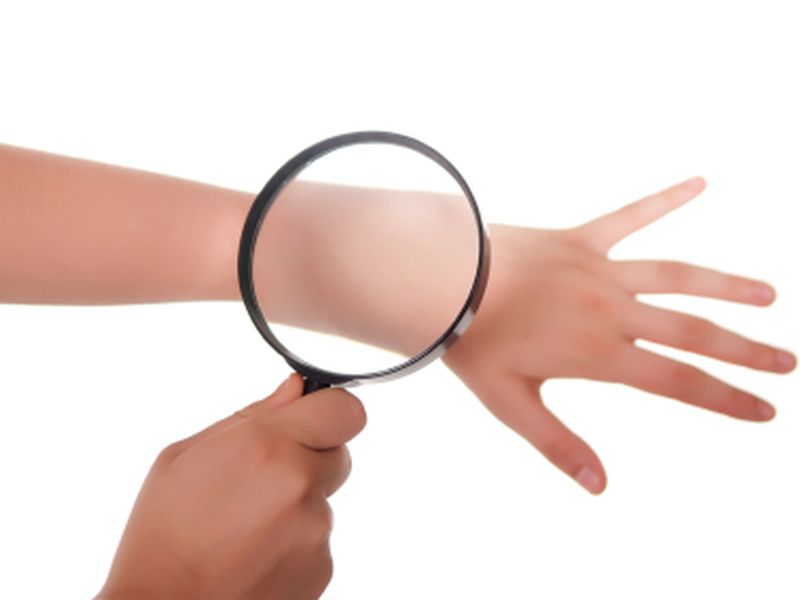
Scientists have discovered another gene mutation behind certain cases of ichthyosis — a group of rare disorders that cause dry scales to form on the skin.
The term ichthyosis is derived from the Greek word for “fish,” and the disorder is sometimes called “fish scale disease” because of its effects on the skin’s appearance.
Less severe cases can look like a mild sunburn, but for some people the condition is disfiguring, said senior researcher Dr. Keith Choate.
So, on top of physical discomfort, ichthyosis can lead to social isolation, low self-esteem and depression, added Choate, an associate professor of dermatology at Yale University.
Researchers have already found over 40 gene mutations linked to ichthyosis, according to the U.S. National Institutes of Health (NIH), which partly funded the study.
Those mutations, the NIH says, can be passed down from one or both parents (who may not have the skin disorder themselves). The gene flaws can also occur spontaneously during fetal development.
The new study, published online June 1 in the American Journal of Human Genetics, adds to the list of genetic culprits. The Doris Duke Charitable Foundation to KAC and the Foundation for Ichthyosis and Related Skin Types also funded the study.
Choate’s team found that mutations in a gene called KDSR appeared to cause ichthyosis in four patients, out of a group of 750.
All four patients had similar effects on their skin, according to the report. Starting in infancy, they developed scaly patches of thickened skin on the face and genitals, plus thick red patches on the palms and soles of their feet.
According to Choate, the culprit gene mutations thwart the skin’s production of ceramides — fat molecules that seal the skin and prevent it from losing moisture.
The good news, the researchers found, is that the drug Accutane — a powerful acne medication — can counter the effects of the mutations.
Two of the patients started the drug and it has nearly cleared their skin, according to Choate. (A third patient has been “advised” to try Accutane, the researchers said.)
That does not mean Accutane is a magic bullet, however.
Doctors already prescribe it to some ichthyosis patients, said Dr. Lawrence Eichenfield, chief of pediatric dermatology at Rady Children’s Hospital-San Diego.
But it “rarely” has the benefits seen in the patients with KDSR mutations, according to Eichenfield, who was not involved in the research.
Still, he said the study offers a “good example” of where researchers and doctors want to go: They hope that uncovering the genes involved in different forms of ichthyosis will shed light on what exactly is going wrong — and help guide treatment.
Researchers could either develop new, “targeted” treatments, Eichenfield said, or figure out which existing drugs could help which patients.
Study co-author Dr. Amy Paller agreed.
“Every time we find another gene — one more piece of the puzzle — it helps us to better understand ichthyosis,” said Paller, chair of dermatology at Northwestern University, in Chicago.
But Paller noted that while that could lead to more individualized treatments, it’s also possible that many genes ultimately operate on the same “pathway” to cause ichthyosis.
That means researchers could look “downstream” of the genes, she said, to find treatments that work for a broad group of patients.
In a study published last year, Paller and her colleagues looked at 21 patients with different forms of ichthyosis. The investigators found that an arm of the immune system — called the Th17 pathway — was overactive across the study group. And the higher the Th17 activity, the more severe the disease was, the findings showed.
The researchers have begun a clinical trial to see whether a drug called secukinumab can ease the inflammation and symptoms of ichthyosis. The drug is already used to treat psoriasis — a more common skin disorder that also involves an overactive Th17 pathway.
In the United States, it’s estimated that about 300 babies are born each year with moderate to severe ichthyosis, according to the non-profit Foundation for Ichthyosis and Related Skin Types.
Although the disorders are rare, Choate said, studying them also gives insight into skin health in general.
The KDSR mutations, he said, show how important ceramides are in maintaining healthy skin.
“People have probably heard of ceramides, because they’re in a lot of moisturizers and other skin products you can buy at the drug store,” Choate noted. “This suggests they might actually do some good.”
More information
The Foundation for Ichthyosis and Related Skin Types has more on ichthyosis.
Source: HealthDay

Leave a Reply